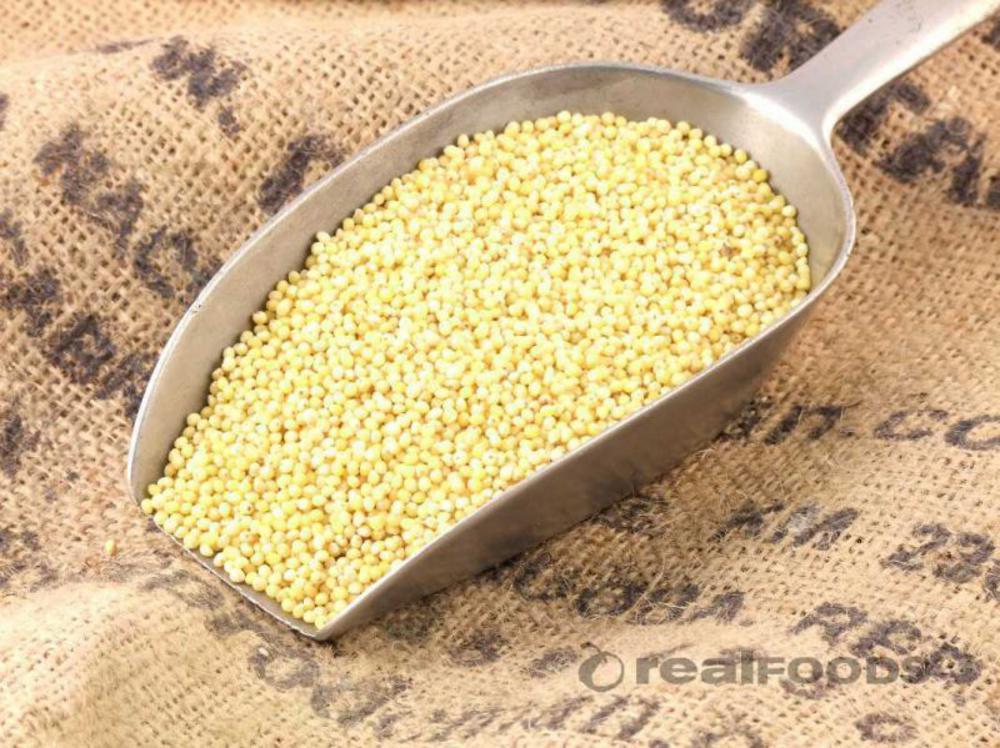What is Millet?

Millet is one of the oldest foods known to humans and possibly the first cereal grain to be used for domestic purposes. It was grown as early as 2700 BC in China where it was the prevalent grain before rice became the dominant staple. Today it sustains 1/3 of the world’s population and is a significant part of the diet in northern China, Japan, Manchuria and various areas of the former Soviet Union, Africa, India, and Egypt.
It has a remarkably hard, indigestible hull, millet must be hulled before it can be used for human consumption. Hulling does not affect the nutrient value, as the germ stays intact through this process. Once out of the hull, millet grains look like tiny yellow spheres with a dot on one side where it was attached to the stem. This gives the seeds an appearance similar to tiny, pale yellow beads.
Millet is highly nutritious, non-glutinous and like buckwheat and quinoa is not an acid forming food so is soothing and easy to digest. In fact, it is considered to be one of the least allergenic and most digestible grains available and it is a warming grain so will help to heat the body in cold or rainy seasons and climates. Millet is tasty, with a mildly sweet, nut-like flavour and contains a myriad of beneficial nutrients. It is nearly 15% protein, contains high amounts of fibre, B-complex vitamins including niacin, thiamin, and riboflavin, the essential amino acid methionine, lecithin, and some vitamin E. It is particularly high in the minerals iron, magnesium, phosphorous, and potassium.
How to cook millet
To cook millet, simply bring 3 parts of water, or stock, to the boil and add 1 cup of millet. Simmer for 30 minutes then remove from the heat and leave to stand with a lid on for 10 minutes. You can enhance the flavour of the grain by lightly toasting in a dry pan before cooking. It’ll only take a few minutes - keep stirring to avoid it catching. You can experiment with varying the ratio of millet to water, and by changing the cooking times, according to your own preferences. The grain has a fluffier texture when less water is used and is very moist and dense when cooked with extra water.
Millet is delicious as a cooked cereal and in casseroles, breads, soups, stews, soufflés, pilaf, and stuffing. It can be used as a side dish or served with sautéed vegetables or with beans and can be popped like corn for use as a snack or breakfast cereal. The grain mixes well with any seasoning or herbs that are commonly used in rice dishes and for interesting taste and texture variations it may be combined with quinoa and brown or basmati rice.
Recipes
Try stuffed peppers with millet if you're entertaining (or fancy treating yourself!)
Try a millet flatbread
Real Foods How To Cook Guides